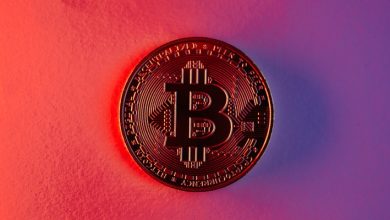An Introduction to Altcoins: What They Are and Why They Matter

- Understanding the basics of altcoins
- Exploring the diverse world of alternative cryptocurrencies
- The rise of altcoins in the digital currency market
- Diving into the technology behind altcoins
- Key differences between altcoins and traditional cryptocurrencies
- The potential impact of altcoins on the future of finance
Understanding the basics of altcoins
Altcoins are a type of cryptocurrency that are an alternative to Bitcoin. While Bitcoin is the most well-known and widely used cryptocurrency, altcoins offer different features and functionalities that set them apart. These digital currencies are built on blockchain technology, just like Bitcoin, but they may have different algorithms, consensus mechanisms, or use cases.
Altcoins can serve a variety of purposes, from providing privacy and anonymity to enabling smart contracts and decentralized applications. Some altcoins are designed to be more energy-efficient or scalable than Bitcoin, while others focus on creating a specific use case, such as facilitating cross-border payments or tokenizing assets.
Investing in altcoins can be a way to diversify a cryptocurrency portfolio and potentially achieve higher returns. However, it’s essential to research and understand the altcoin you’re interested in before investing. Factors to consider include the team behind the project, the technology it’s built on, the problem it aims to solve, and its adoption and community support.
Exploring the diverse world of alternative cryptocurrencies
Exploring the diverse world of alternative cryptocurrencies can be an exciting journey for investors and enthusiasts alike. With the rise of Bitcoin and other established cryptocurrencies, altcoins have also gained popularity in recent years. These digital assets offer unique features and functionalities that set them apart from traditional cryptocurrencies.
One of the key advantages of altcoins is their innovative technology, which allows for faster transactions and lower fees compared to Bitcoin. Additionally, many altcoins are designed to address specific use cases, such as privacy, smart contracts, or decentralized applications. This diversity in functionality makes altcoins a valuable addition to the cryptocurrency ecosystem.
Some popular altcoins include Ethereum, Ripple, and Litecoin, each offering its own set of features and benefits. Ethereum, for example, is known for its smart contract capabilities, which enable developers to create decentralized applications on its blockchain. Ripple, on the other hand, focuses on facilitating cross-border payments for financial institutions.
As the altcoin market continues to grow, it is essential for investors to conduct thorough research and due diligence before investing in any specific altcoin. Factors to consider include the technology behind the altcoin, its use case, the team behind the project, and market trends. By staying informed and educated, investors can navigate the diverse world of altcoins with confidence and make informed investment decisions.
The rise of altcoins in the digital currency market
The digital currency market has seen a significant rise in the popularity of altcoins in recent years. Altcoins, or alternative cryptocurrencies, have gained traction as investors seek new opportunities beyond traditional coins like Bitcoin. These altcoins offer unique features and functionalities that set them apart from their more well-known counterparts.
One of the main reasons for the rise of altcoins is the desire for diversification in investment portfolios. As more people become interested in cryptocurrencies, they are looking for ways to spread their risk across different assets. Altcoins provide an opportunity to invest in projects and technologies that may have higher growth potential than Bitcoin or other established coins.
Another factor driving the popularity of altcoins is the increased focus on blockchain technology. Many altcoins are built on their own blockchain platforms, allowing for more flexibility and customization. This has led to the development of innovative applications and use cases that are not possible with traditional cryptocurrencies.
Furthermore, altcoins can offer faster transaction speeds and lower fees compared to Bitcoin. This makes them an attractive option for users who value efficiency and cost-effectiveness in their digital transactions. As a result, altcoins have gained a strong following among both investors and users looking for alternatives to traditional cryptocurrencies.
Overall, the rise of altcoins in the digital currency market reflects a growing interest in innovation and diversification. With their unique features and potential for growth, altcoins are likely to continue playing a significant role in the cryptocurrency ecosystem for years to come.
Diving into the technology behind altcoins
When it comes to altcoins, understanding the technology behind them is crucial. Altcoins are essentially cryptocurrencies other than Bitcoin. These digital assets operate on their own blockchain technology, which is the underlying infrastructure that allows transactions to occur securely and transparently. By diving into the technology behind altcoins, investors can gain a deeper understanding of how these digital currencies work and why they hold value in the market.
One of the key technologies that altcoins leverage is blockchain. This decentralized ledger records all transactions made with a particular altcoin, ensuring that the information is secure and cannot be tampered with. This technology is what sets cryptocurrencies apart from traditional forms of payment, as it eliminates the need for a central authority to oversee transactions. As a result, altcoins can offer lower fees and faster transaction times compared to traditional banking systems.
Additionally, altcoins often utilize smart contracts, which are self-executing contracts with the terms of the agreement directly written into code. These contracts automatically facilitate, verify, or enforce the negotiation or performance of an agreement, enabling trustless and automated transactions. Smart contracts are a key feature of many altcoins and have the potential to revolutionize industries such as real estate, supply chain management, and healthcare.
Furthermore, altcoins may also incorporate other technologies such as proof of stake or proof of work consensus mechanisms. These mechanisms are used to validate transactions and secure the network, ensuring that the blockchain remains immutable and resistant to attacks. By understanding these consensus mechanisms, investors can assess the security and scalability of a particular altcoin and make more informed investment decisions.
In conclusion, diving into the technology behind altcoins is essential for anyone looking to invest in these digital assets. By understanding how blockchain, smart contracts, and consensus mechanisms work, investors can gain valuable insights into the value proposition of different altcoins and assess their potential for long-term growth. Ultimately, a deep understanding of the technology behind altcoins can help investors navigate the complex and rapidly evolving world of cryptocurrency with confidence.
Key differences between altcoins and traditional cryptocurrencies
When comparing altcoins to traditional cryptocurrencies, there are several key differences that set them apart. Understanding these differences can help investors make informed decisions about where to allocate their resources. Here are some of the main distinctions between altcoins and traditional cryptocurrencies:
- Technology: Altcoins often utilize different underlying technologies than traditional cryptocurrencies. This can include variations in consensus algorithms, block sizes, and privacy features.
- Market Value: Altcoins typically have lower market capitalizations than well-established cryptocurrencies like Bitcoin and Ethereum. This can lead to higher volatility and potentially greater investment opportunities.
- Use Cases: Altcoins may serve specific use cases or industries, such as decentralized finance (DeFi), gaming, or supply chain management. This specialization can attract investors looking for exposure to particular sectors.
- Development Teams: Altcoins are often associated with smaller development teams or communities than traditional cryptocurrencies. This can impact the speed of innovation and the level of support available for the project.
- Regulatory Environment: Altcoins may face different regulatory challenges than traditional cryptocurrencies due to their unique features or use cases. Investors should be aware of the regulatory landscape when considering altcoin investments.
The potential impact of altcoins on the future of finance
Altcoins have the potential to revolutionize the future of finance by offering a diverse range of options beyond the traditional cryptocurrency market. As these alternative coins gain traction, they are challenging the dominance of major players like Bitcoin and Ethereum. This shift could lead to a more decentralized financial system that is less reliant on centralized institutions.
One of the key advantages of altcoins is their ability to introduce innovative features and technologies that address the limitations of existing cryptocurrencies. For example, some altcoins focus on enhancing privacy and security, while others aim to improve scalability and transaction speeds. This diversity of offerings can cater to a wider range of needs and preferences among users.
Furthermore, the rise of altcoins has sparked a new wave of investment opportunities in the digital asset space. As more investors diversify their portfolios with altcoins, the overall market becomes more dynamic and resilient. This trend towards increased diversification could help mitigate risks associated with concentrated holdings in a few major cryptocurrencies.
Overall, the potential impact of altcoins on the future of finance is significant. They have the power to disrupt traditional financial systems, foster innovation, and create new opportunities for investors and users alike. As altcoins continue to evolve and gain mainstream acceptance, their influence on the financial landscape is likely to grow exponentially in the years to come.



